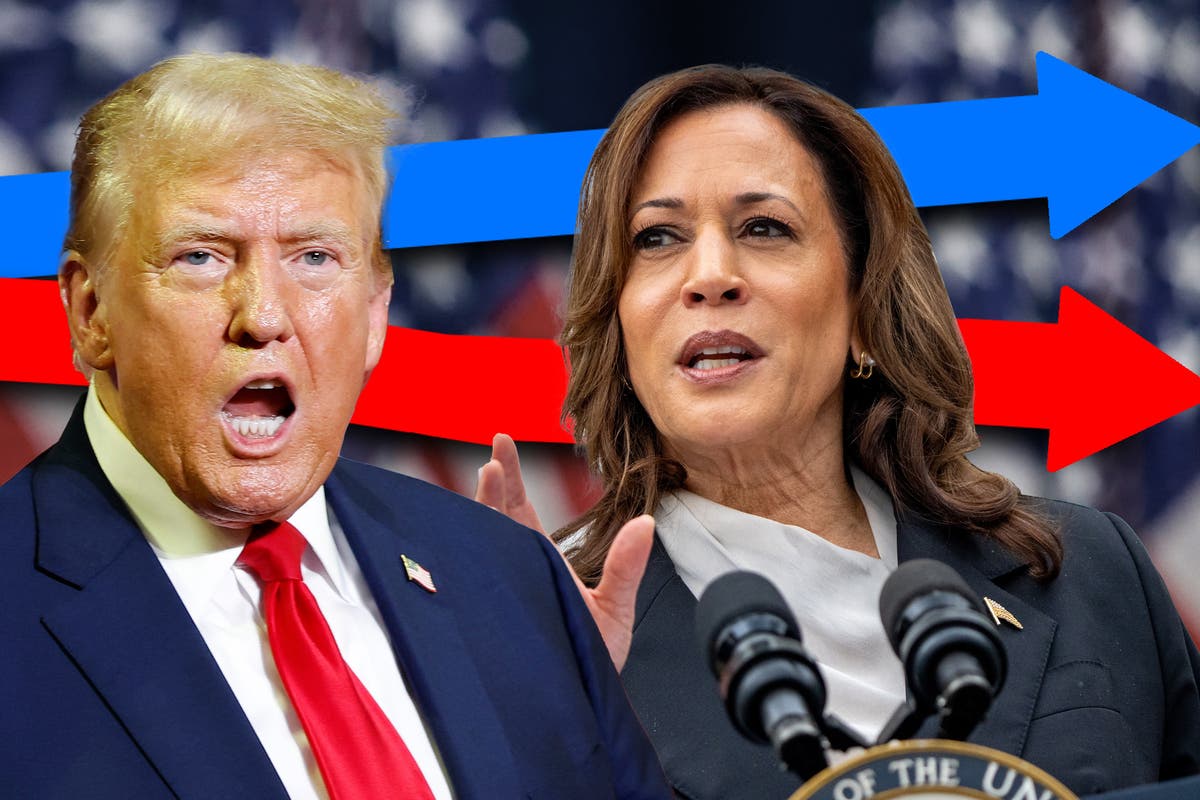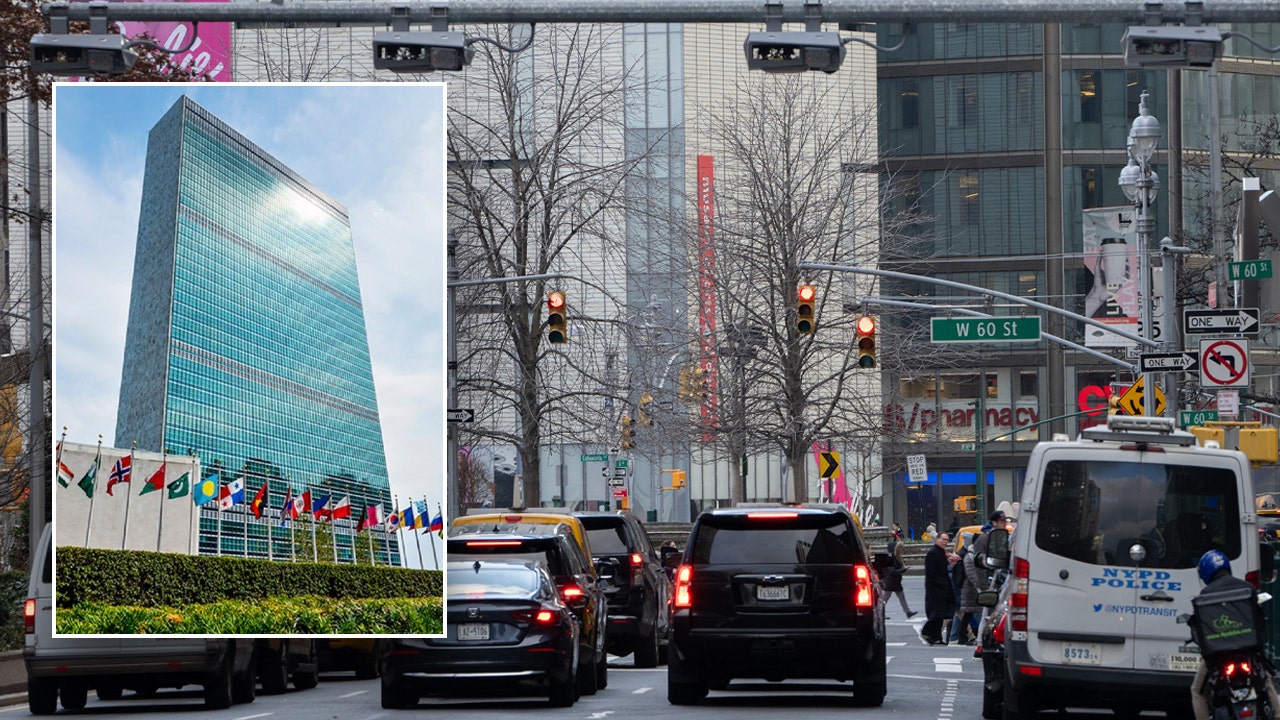World
Can Kamala Harris beat Donald Trump? Latest poll updates from the 2024 election

Vice President Kamala Harris will go head-to-head with Donald Trump in less than a month as Americans cast their votes in the 2024 election.
With just weeks to go, Trump may be losing his grip on older generations of voters, with the latest New York Times polls showing the two candidates split by a hairline; and Harris ahead by 3 points.
In another twist, the presidential race in Florida has seen a tumultuous polling period. With multiple polls showing a dwindling Trump lead with Harris just 2 points behind, the latest NYT poll has reversed expectations, once again putting Trump ahead by a mile.
So how will Harris and Trump fare in November?
The latest average of national polls, collated by FiveThirtyEight, shows Harris with a 2.6-point lead over Trump. On average, Harris has been marginally ahead of Trump in national polls for several weeks.
The latest polls from the New York Times/Siena College have Harris ahead by 3 points, at 49 percent and Trump at 46 percent.
The strongest support group for Harris remains young voters and those from non-white backgrounds. Meanwhile, Trump’s key base are white, non-college voters.
Meanwhile, to the chagrin of the Trump campaign, the poll suggests that older generations of voters are no longer staunchly Republican.
For both Gen X and Boomers, Trump’s lead has significantly diminished over the last few New York Times/Siena College polls.
In fact, the two candidates are effectively tied among both groups; as Trump has just a 1 and 2 point lead, within the +-2.4 margin of error.
While it remains to be seen how this might change in the final stretch, the Republican Party has won over-65s in every election since 2000.
The gender divide between Trump and Harris voters remains strong, with women leaning left and men leaning right.
Both candidates are promising change, but Trump has typically had more success in developing that reputation than Harris.
Yet this poll also shows that Harris is now more likely to represent change (46 percent) than Trump (44 percent).
Unstable polls in Florida
There was a flurry of interest around polls in Florida in the past few weeks, with Harris appearing to encroach on Trump’s lead in his home state.
In particular, figures from the historically Republican pollster RMG Research showed Trump with 50 percent of the vote and Harris with 48 percent in Florida, which is home to Mar-a-Lago and several key Republicans.
However, this morning’s polls from the New York Times show Trump ahead by a strong +13 points in the sunshine state, at 55 percent to Harris’s 41 percent.
Though this is out of line with several recent polls in the state, New York Times analyst Nate Cohn suggests that this poll is not an outlier, saying: “Mr Trump [excels] in states where Republicans performed well in the 2022 midterm elections – as they did in Florida. As a result, this poll is not the usual outlier.”
“If Florida becomes more solidly Republican in 2024, it suggests that the upheaval during and after the pandemic has had a lasting effect on American politics.”
Vance wins the VP debate and a popularity boost
Last week’s debate between Ohio senator Vance and Minnesota Governor Walz turned expectations on its head; with betting markets and pre-polls eyeing Walz as the presumed winner.
Not only did Vance “win” the debate, but his performance appears to have done wonders for his public perception, which had been suffering for months.
Our analysis before the debate found that Walz led Trump, Vance, and even Harris in terms of favorability.
Vance received an +11 point boost in favorability from last week’s debate, according to the latest poll from YouGov.
This leaves Vance in a neutral position, while voters had an overall –11 percent unfavorable opinion of him before the debate.
Most interestingly, Vance improved his favorability by an astonishing +19 points among Democrats. Although, overall, he is still at a net –52 percent negative score among this group.
Walz also received a more modest 3-point boost, reaching 15 percent favorability in YouGov’s poll.
Although Walz’s performance was not debate-winning, he is still the most-liked candidate, and he even improved his favorability among independent voters following the debate.
Among his own party, though, he lost approval from 7 percent of voters, still ending up at a net-positive position of 72 percent favorability with Democrats.
Snap polls following the debate show that viewers were split on both candidates and Vance came out a few points ahead.
A CBS/YouGov poll found that 42 percent of viewers considered Vance the debate winner, compared to 41 percent for Walz.
However, Walz did emerge as more in touch with the average American, and more likely to share voters’ vision for America.
For the full post-debate polling analysis, click here.
Key issues for voters
Regardless of political affiliation, the economy is the most important issue impacting how people will vote in this election.
A poll from Redfield & Wilton Strategies, of 2,500 US adults up to September 26, shows that abortion is considered the second most important issue, for 37 percent of voters, followed by immigration at 34 percent.
For Trump voters, however, these priorities are flipped.
Over half (57 percent) of Trump voters view immigration as one of the biggest issues, amid border security tensions and recently debunked claims from Trump and Republicans about Haitian migrants.
Interestingly, healthcare and abortion are tied as the next most important issues for Trump voters – at 23 percent each.
Though Trump has advocated for overhauling Obamacare, with unsuccessful attempts during his presidency, he was unable to outline an alternative healthcare policy at the September presidential debate.
Meanwhile, abortion is front and center for Harris voters (55 percent), with Harris herself critical of abortion bans, following the overturning of Roe v Wade.
Healthcare is also a top priority for Harris voters (40 percent), followed by housing (23 percent).
Battleground states
Recent polls from the swing states by Bloomberg/Morning Consult have Harris ahead by +3 points on average, ranging from neck-and-neck with Trump to a +7 point lead.
The poll of more than 6,000 registered voters in the swing states was conducted from September 19-25, with margins of error ranging from 1 to 4 percent in each state.
In Pennsylvania, which hosted the first Harris-Trump presidential debate, Harris has seen her lead increase from +4 points to +5 points since August.
The state had previously been leaning towards Trump when President Joe Biden was on the Democratic ticket.
Harris has the strongest 7-point lead over Trump in Nevada, with 52 percent of the vote to 45 percent.
In Georgia, the two candidates are tied at 49 percent each, while Harris’s 5-point lead in Wisconsin has shrunk to 3 points ahead of Trump.
Harris is also 3 points ahead in Michigan and Arizona and 2 points ahead in North Carolina.
While the economy remains the top issue for swing-state voters, the perceived “competency gap” is shrinking: 45 percent of swing-state voters think Harris can better handle the economy, slightly behind Trump at 49 percent.
Who will vote?
A YouGov/Economist poll has Harris with a three-point lead among registered voters, at 47 percent and Trump at 44 percent. The poll shows a wide 25-point margin for Harris among young voters, aged 29 and under.
However, according to the same poll, the younger generations are also the least committed to voting, with 13 percent of the 18-29-year-olds surveyed saying they will “maybe” vote, while 3 percent will not vote or are still unsure.
This amounts to 16 percent who are on the fence or not voting, higher than any other age group, and higher than the average of 9 percent. Just 65 percent of the 18 to 29-year-olds polled said they would definitely vote in November.
This is in comparison to 77 percent of 30 to 44-year-olds, 85 percent of 45 to 64-year-olds, and 94 percent of the 65+ age group.
Though the numbers may seem dismal, and represent a degree of hesitancy among younger voters, the overall picture is significantly more engaged than in 2020.
The same YouGov/Economist poll at this stage in the 2020 presidential election showed that nearly a third of young people (27 percent) were not committed to voting in November, with 10 percent “maybe” voting and 17 percent “definitely/probably” not voting.
Arizona: key issues
In Arizona – a historically Republican state that has 11 electoral college votes and flipped for Biden in 2020 – polls have shown inconsistent leads for both Harris and Trump.
The Trump campaign has made frequent stops in the state over the summer.
In a state that borders Mexico, one in five (19 percent) of Arizona voters say that immigration is the most important issue affecting their vote, according to the same poll.
This is second to the economy, which is the number one issue impacting voters statewide and nationwide.
The majority (51 percent) of Arizona voters believe that Trump is better equipped to handle the top issues, which has flipped since August when Harris was slightly more trusted.
This indicates that, despite the overall enthusiasm for Harris’s debate performance, Arizona voters may favor Trump and his approach to key issues. As a generally Republican state, this is unsurprising.
Make sense of the US election with The Independent’s experts in our exclusive virtual event ‘Harris vs. Trump: who will make history?’ Reserve your space here.








